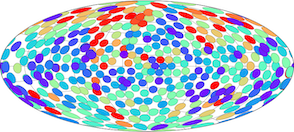HaloSatHaloSat was designed to survey the distribution of hot gas in the Milky Way and constrain the mass and geometry of the Galactic halo.The mission, led by the University of Iowa (UIowa, PI P.Kaaret) as a rapid-development CubeSat mission, was selected by NASA with funding started in 2016. Launched on May 21, 2018 from the Wallops Space Flight Facility, as part of the payload of the Cygnus OA-9 International Space Station (ISS) resupply mission, HaloSat was placed in the airlock of the Japanese Experiment Module (JEM) and deployed into circular low Earth orbit on July 13, 2018 using a Nanoracks CubeSat Deployer. The science operations started in October 2018. To trace the Galactic halo, HaloSat is equipped with a non-focusing instrument, comprised of three independent silicon drift detectors with the following characteristics:
The science data center is located at UIowa where the data are processed and the outputs provided to the HEASARC archive for public distribution. Mission operations are handled by Blue Canyon Technologies. Latest NewsMay 23, 2023The catalog with the fitting results of the HaloSat Circumgalactic Medium (CGM) fields is now available in the archive.
May 1, 2023All Halosat data collected during the science operations from Oct 15, 2018 and Sep 29, 2020 were reprocessed (version hsuf_20221026) and are now available from the HEASARC archive. More details are available in the reprocessing page
Dec 14 2022Release of a report on the Halosat background and an update of the data analysis guide
Feb 14, 2022Release of a report on the in-flight calibration and an update of the data analysis guide
Feb 12, 2021The complete HaloSat data archive is now available from the HEASARC. This release includes all data collected during the science operations from Oct 15, 2018 and Sep 29, 2020. The observations include 415 fields covering all the sky.
Jan 4, 2021.HaloSat reentered Earth's atmosphere on January 4, 2021 marking the end of the satellites nearly two and a half year orbit. More on HaloSat
Apr 15, 2020.HaloSat archive opens
|



